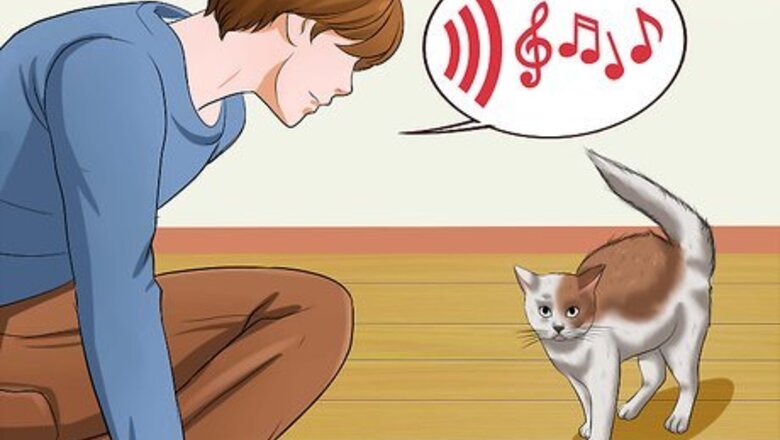
views
Approaching the Cat
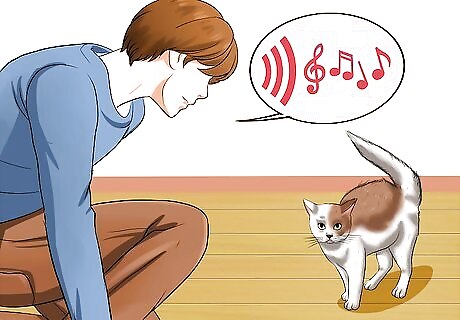
Speak calmly and quietly. Talk to the cat in a low, soft, soothing voice. Say its name, if you know it. Pay attention to the cat’s body language while talking to it. If the cat looks and acts normal, it may have calmed down. Be careful, however, if you see continued signs of aggression, such as: A stiffened tail Ears flattened backwards Raised fur A direct stare Hissing, spitting, mewling, or growling Swatting, batting, scratching, or bitting
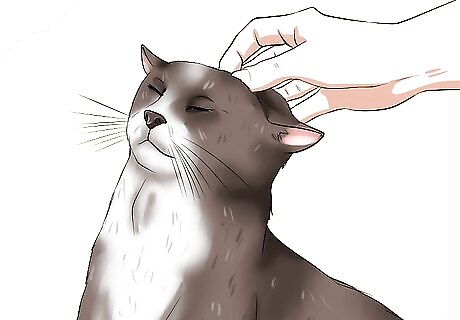
Attempt to touch the cat. If the cat appears to have calmed down, you can try to touch it. Gently stroke the back of its head and down its back. Stop immediately, however, if the cat begins to show signs of aggression again.

Wait until the cat calms down, if possible. When in doubt, leave the cat alone. If you fear injury from an aggressive cat, and do not have to immediately pick it up, wait for it to calm down. Watch it from a safe distance until it stops all aggressive body language, and only attempt to pick it up then.
Picking Up a Cooperative Cat
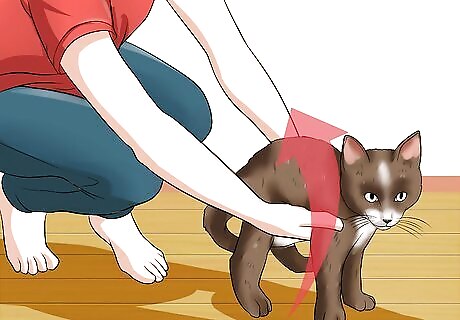
Gently pick the cat up if it appears to have calmed down. If the cat will let you touch it without reacting aggressively, attempt to pick it up. Place your hand gently under its abdomen. Using your fingers, lightly grasp its front legs. Raise the cat slowly upwards, and press it gently against your body. Gently hold its chin with your other hand. Stop immediately and let the cat go if it begins to act aggressively again.
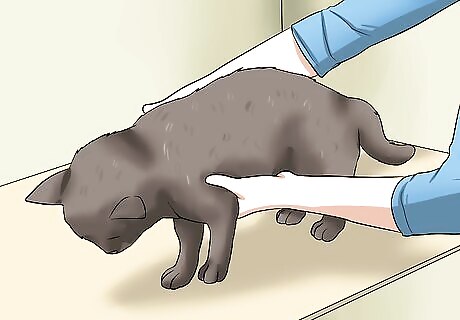
Grasp a cat that is at a higher level. If the cat is on a table or similar surface, approach it facing its left side. Carefully put your right arm over its back and under its chest. Hold its front legs with your fingers. Use the rest of your arm to gently press the cat against your body. Hold the cat’s head with your left hand. Do not attempt this method if the cat is violent. If the cat becomes aggressive in the midst of attempting it, stop and try another technique.
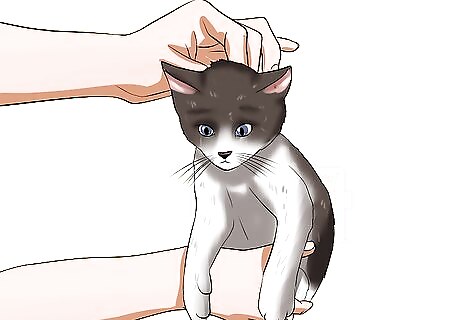
Pick up the cat by the scruff of the neck if it is frightened. If the cat appears aggressive and scared, you can attempt to gently pick it up by the scruff of the neck, supporting its back feet with your other hand. This may calm the cat and allow you to control it. You should not use this technique on an adult cat (over 6 months). In many cases, picking a cat up by the scruff of the neck will restrict its ability to breathe and only make it more aggressive. Some experts recommend never picking a cat up by the scruff of the neck.
Picking Up a Violent Cat
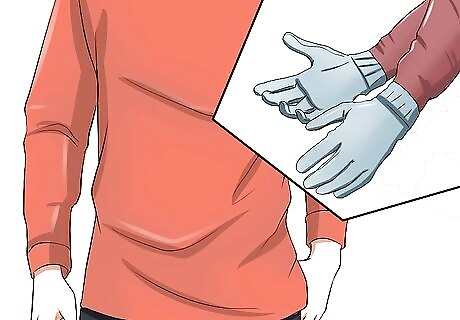
Wear appropriate clothing. If you must handle a cat that is actively aggressive, you must protect yourself from potential bites and scratches. Before picking up the cat, put on long sleeves, pants, gloves, and shoes. Keep your face out of the cat’s reach.
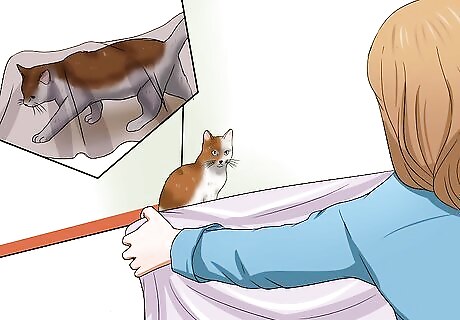
Place a towel or heavy blanket over the cat. Maneuver the cat into an area it cannot easily get out of, such as a corner. Approach the cat slowly, from above it, while holding a thick blanket or large towel. Place the blanket over the entirety of the cat. Do not throw the blanket. The cat will probably react faster than you can act, and escape.

Wrap the cat and pick it up. Slide the rest of the cloth under the cat. Attempt to wrap it up like a bundle. Once it is covered (especially its mouth and claws), pick the cat up within the blanket. Clutch it firmly, but do not squeeze it.
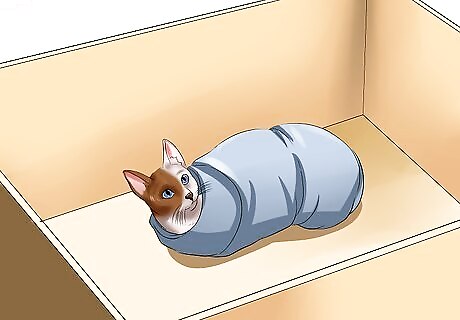
Take the cat to a safe location. Once you have picked up the cat, you can put it and the blanket in a crate or carrier that is large enough for the cat to move around in and get out from under the blanket. Otherwise, carefully let the cat out of the blanket into the crate or carrier. Close the door immediately, and take it to a vet or animal shelter if necessary. Alternatively, you can place the blanket-wrapped cat in another room where it will not be disturbed by other people or animals. Wait for it to calm down before handling it further. Tossing a treat inside the room may help.

Contact professional help if needed. If you cannot handle an aggressive cat without risking serious injury, contact an animal shelter, humane society, or animal behaviorist for tips and advice. These experts are trained in the use of special techniques and equipment (such as muzzles and leashes) that may need to be used in certain cases.




















Comments
0 comment